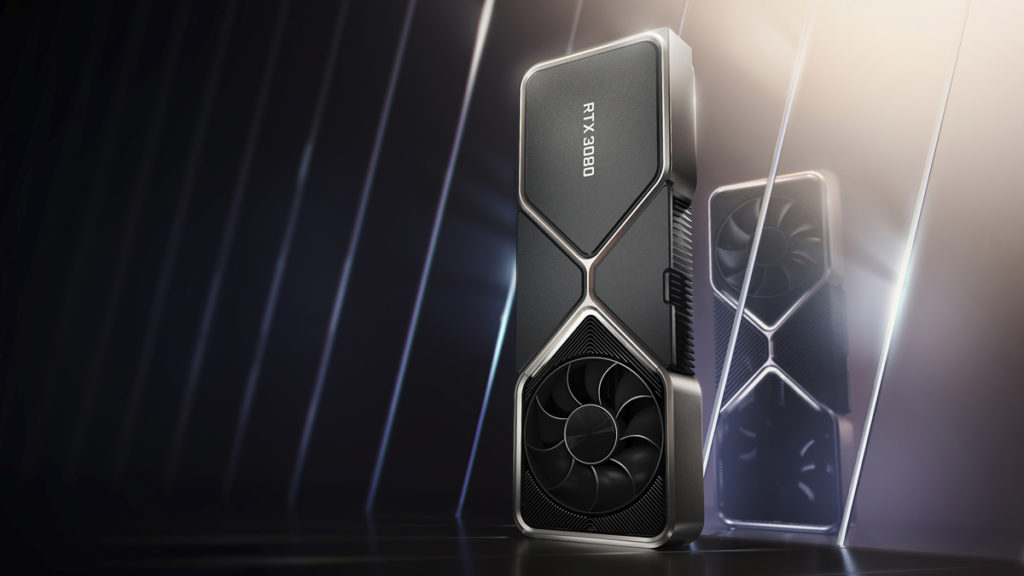
Moore’s Law Is Dead has published an article that makes some serious allegations against NVIDIA. The leaker claims that green team’s beautiful Founders Editions, which feature an expensive, cutting-edge cooler, are only reasonably priced because the company never intended to make or sell many of them. This is “scarcity by design,” Moore’s wrote, alleging that their primary purpose is to serve as golden samples that ensure glowing initial reviews, which, in turn, would pump up Ampere interest to a fever pitch and worsen an already lukewarm supply situation, allowing NVIDIA to indirectly increase GeForce RTX 30 Series pricing.
“…I think this is Nvidia’s Ultimate Play: Intentionally causing an initial dearth of Ampere stock, allowing ‘supply and demand’ to inflate the street price of Ampere when those beautiful $699 Founders cards instantly sell out, and then ultimately forcing AIBs to sell most of their models well above MSRP due to the required BOM Cost-Downs…that will be in ample supply once the street price is elevated,” Moore’s Law Is Dead wrote.
We’ve copied the rest of Moore’s claims below, which includes a prediction that NVIDIA will release 20 GB versions of the GeForce RTX 3080 and 16 GB versions of the GeForce RTX 3070 as early as October. “NVIDIA is seemingly attempting to keep margins elevated for another killer earnings season, and yet at the same time trying not to be perceived as the ‘bad guy’ anymore,” the leaker noted.
- Nvidia wants to keep their 50%+ average margins while pretending they are offering good value.
- They seek to accomplish this by selling incredible Founders Editions with low margins (at MSRP) from their website, but with painfully limited stock by design.
- Nvidia knows that if they get stellar Day One reviews praising Ampere for its performance and value, they will win back the hearts of gamers – which they lost with Turing – before RDNA 2 launches. Most people only read and remember the Day One reviews.
- There should be AIB models available day 1, but I am told only ~20% of the stock is required to be near MSRP, and likely in models with far inferior coolers to the FE design. Already a glance at some of the announced AIB cards shows that indeed, these are not going to be sold at MSRP: https://www.techspot.com/news/86681-aftermarket-rtx-3080-rtx-3090-card-prices-revealed.html
- Additionally, Nvidia is allegedly causing supply of all Ampere models (including AIB) to be artificially limited during the first month of sales. Nvidia is supposedly doing so by controlling some key components AIBs need. I was able to independently verify this with an AIB who said “There will be low stock at launch, but it’s just propaganda.”
- Ampere demand will outstrip the initial stock, and so the price will balloon by October.
- Eventually, this stock issue will suddenly disappear, much sooner than we have been led to believe with rumors about bad yields.
- If all of this is true, Nvidia could state that the elevated prices aren’t their doing, and they could do so while pointing to a very limited number of cards that sell for MSRP every week. Likely models with the cheapest coolers.
- The double memory versions of cards (RTX 3080 20GB, RTX 3070 16GB) should land roughly around when Nvidia stuffs the inventory in October. These will also come with a far higher price than the original models.
- I can confirm that the double memory cards will not be sold from Nvidia’s website, and thus they will be able to claim AIBs are behind the price hike. These marked up cards are likely what Nvidia really wants you all to buy, and yet all those Day One reviews will say the 3080 is “Just $700.” Having your cake and eating it too.
- Samsung’s 8nm node sounds much more able than previously reported by MLID. It doesn’t sound like there are “yield” problems on Samsung’s glorified 10nm node in 2020. At least not problems big enough to cause Ampere stock to be as low as it will be artificially at launch.
Are these just the crazy theories of someone who’s playing for the opposite team? That’s up for you to decide, but Moore’s did end his article with alleged information pertaining to AMD’s “Big Navi” GPU. According to the leaker, the Radeon RX 6000 Series flagships should be in “spitting distance” of NVIDIA’s GeForce RTX 3080 in terms of rasterization performance. Again, we’ve copied the rest of his claims below.
- At least within spitting distance of the RTX 3080 in rasterization performance. If AMD doesn’t “beat” the 3080, they will assuredly crush the RTX 3070.
- Substantially more efficient at originally intended clocks than Ampere, although they may push some models a bit to more directly compete with the 3080. Even when pushed, I do not expect these models to be power hogs.
- Potentially smaller than many people seem to expect, at least relative to Ampere. The specs I have just been made aware of are close to what I had incorrectly assumed must be Navi 22. This is made possible by incredible improvements to how RDNA manages memory and bandwidth. It should (for the first time since before GCN) make due with less bandwidth than Nvidia counterparts.
- Provides Ray Tracing capabilities that overall exceed Turing, but likely underperform Ampere.
- No confirmation on what AMD’s answer to DLSS will be, but they are “taking it seriously.” The software stack is simply not confirmed yet.
